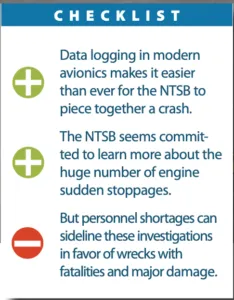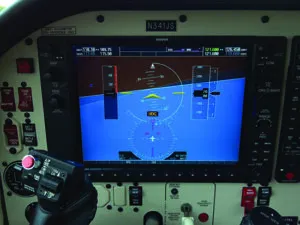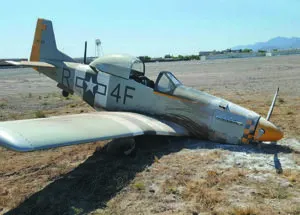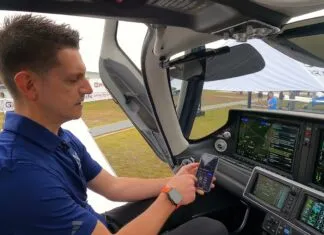In response to the “After the Dust Settles: Protecting Yourself” article (November 2021 Aviation Consumer) on dealing with a post-crash aftermath, including subsequent regulatory realities, we got a letter from (and had a subsequent meeting with) Tom Haueter, who offered a behind-the-scenes look at accident—and in particular, incident—investigations and what it means to general aviation aircraft owners. He would know.
Haueter, who is the retired NTSB Director of the Office of Aviation Safety, a 28-year NTSB investigator and an aircraft owner, restorer and pilot, said it’s just wrong to suggest that the NTSB doesn’t bother with aircraft incidents, and that there is no obligation to report an incident. We often express concern that the agency might not be doing enough to investigate a sizable number of engine stoppages for “undetermined reasons.” Turns out there’s more going on with the NTSB’s day-to-day tasks, including not only investigating accidents and incidents, but also looking at component-level failures before they even become an inflight event.
IT’S IN THE REGS

When it comes to confessing about breaking our aircraft, we’re directed to 49 CFR Part 830, the regulatory speak that provides for the “notification and reporting of aircraft accidents or incidents,” and particularly part 830.2, pertaining to the initial notification and later reporting of aircraft incidents, accidents and certain other occurrences in the operation of aircraft, wherever they occur. That’s simple and complicated.
An incident is defined as an occurrence other than an accident, associated with the operation of an aircraft, which affects or could affect the safety of operations. Obviously, this is a very broad definition that covers many events. However, by statute, such events must be reported. That doesn’t always happen, and it’s a way to attract the FAA’s attention.
Here’s a rumor based on a true story. A pilot balls up his Comanche one night after landing with the wheels retracted and somehow ends up off the runway. With the assistance of his partner who owns a towing service, they quietly stuff the airplane in the hangar and turn out the lights. The issue (among many) is that chances are someone either saw the shenanigans or heard about them, and eventually the FAA FSDO and then the NTSB find out about it. But it’s only a gear-up landing, with no injuries and from the looks of it, without major damage (by regulatory definition), right? The prop took a hit and the cowling got busted up. But did the spar take a hit when the wingtip smacked the pavement and the airplane went into the tullies? Maybe, and if it did, that’s an accident under Part 830 of the reg. Haueter reiterated that by statute, such events must be reported.
Once an event has been determined to meet the criteria to be classified as an accident, the NTSB investigator has no other option than to conduct an investigation. However, Haueter said the level and detail of the investigation can vary greatly. The Office of Aviation Safety does about 1300 accident and incident investigations annually, and most of the agency’s time and resources are put into fatal accidents. Incident investigations depend on the significance of the event, and it is very much a judgment call by the investigator.
Worth mentioning is that Annex 13 to the Convention on International Civil Aviation, which reflects the standards and recommended practices covering aircraft accidents and incidents, is an important point of reference of NTSB operations and investigations. It reflects the standards and recommended practices for investigation, while defining (in part) an accident as an occurrence in which a person is seriously or fatally injured, and in which an aircraft sustains damage or structural failure requiring repair. The sole objective of an Annex 13 investigation is to generate safety data and information to aid with the prevention of future and similar accidents or incidents. That’s why the NTSB is often involved in international crash investigations—and why it also investigates incidents.
INCIDENTS AND THE FAA

As for gear-up landings that result in significant structural damage, but no serious injuries, a report is created, but very little time and resources are spent on these events, we’re told. We’re pleased to hear this, and even more so that the NTSB seems to favor spending whatever small remaining resources it has (the agency is substantially understaffed) on mechanical issues relating to airworthiness.
“I personally investigated one heck of a number of incidents that resulted in NTSB safety recommendations and subsequent Airworthiness Directives or FAA Safety Alerts,” Haueter told us. He rightfully pointed out that incident investigations can provide information needed to prevent accidents and therefore, provide an important source of information leading to safety. It helps that many NTSB investigators are active in the GA community—owning, operating and maintaining aircraft. As one example, Haueter wrote an AD recommendation after his own mechanic spotted a fatigue crack in a swivel pin used on a Piper landing gear.
Unfortunately, the NTSB does not have sufficient aviation accident investigation staff to cover the fatal accidents AND also to do a deep dive into all significant incidents. There’s a group of approximately 129 investigators, and even that group has a sizable number of vacancies. And while the department focuses entirely on aviation (and not highway and railway accidents, for example) the workload is high given the wide range of oversight—from ultralights to air carrier ops.
That means less serious accidents and incidents are moved to the bottom of the priority list, and since the NTSB doesn’t have the resources to send people to investigate them, it sends the FAA to collect the data in the field. While the NTSB always writes the analysis and probable cause (and does the hands-on technical analysis including engine teardowns and such), of the 1300 or so accidents and incidents, the FAA could be involved in perhaps 1000 of them. This huge coordination between NTSB and FAA has been going on for decades.
There is an FAA accident investigation office that works closely with the NTSB at its headquarters. And while the FAA gets involved in larger accidents, if you dump your Cessna 150 off the end of the runway and bend some metal, chances are the FAA will show up for the data-collecting portion of the investigation. To be clear, the FAA employee(s) showing up wearing an NTSB hat for the data collection can in no way do anything regulatory. As an example, if the FAA inspector sees something that’s outside of the regulations that would normally be an on-the-site violation, it’s off-limits because the NTSB doesn’t issue violations. FAA inspectors have been removed from cases when they couldn’t separate regulatory matters from the fact-finding task at hand. But that doesn’t mean you can’t and won’t be issued a violation. It actually makes it easier.
There are often dual FAA investigations—one going on to collect the accident or incident data, and another on the regulatory side. By regulatory statute, the FAA is always involved in NTSB investigations. With the exception of autopsy reports and proprietary information and such, everything the NTSB does is available to the public. That means the FAA inspector involved in a dual investigation will have easy access to all the data that’s collected on the NTSB side. This can be used to start a regulatory investigation, while the two agencies tag team the process, sharing specific findings across the offices.

THOSE SNITCHING AVIONICS
These days, it’s easier than ever for the NTSB to gather huge amounts of flight data from crunched-up and scorched aircraft thanks to the data recording capabilities built into avionics systems. In the bad old days of accident investigations there was some amount of guesswork involved, especially when the aircraft was destroyed and the pilot was killed. But that’s changing for the better, thanks to data storage in even the most basic digital avionics suites, and that means more accurate and detailed final reports. In the world of NTSB investigations for air carrier ops, the data collection point went from less than 20 parameters to over 1000, all because of smart electronics, and the capability is tremendously helping with GA investigations, too.
Some wrecks are easier than others. When the weather is bad and the non-instrument-rated pilot augers, it’s a pretty easy conclusion. But for more complex investigations, the NTSB has moved to chip-level analysis—removing and reading the data on individual microchips stored deep within an avionics system. As an aside, this has changed the litigation world because now there’s real-world critical data to work with, rather than hypothesis.
Still, the NTSB has gotten really good with collecting data from recovered equipment, and there are plenty of obvious and not so obvious tattletales. It can look at switch positions, as one example, when determining what mode an autopilot was engaged in at the time of the impact, although modern autopilots store mode data in a microchip. For older autopilots that have incandescent mode annunciators, a lab test can determine filament stretching from heat and G loads, indicating whether or not the autopilot was engaged at impact.
Speaking of data collection and equipment, understand that the NTSB (and FAA) have a wide-reaching authority when it comes to investigating accidents and incidents. When that aircraft comes to a screeching halt and hits the dirt, by regulation everything belongs to the NTSB—from the airframe to the avionics, engine and logbooks. Every bit of information (including pilot records) that could have led to the accident or incident is now in the hands of the agency. Essentially, you’ve lost control of your aircraft until the NTSB is ready to give it back.
There doesn’t have to be an accident, incident or even a flight taken place. If there’s something the NTSB wants to investigate, it has the power to do so. If it has the potential to affect aviation safety (flash back to the Boeing 787 battery issue at Boston’s Logan Airport), the NTSB uses its heavy hammer to step in and ground the aircraft.
ENGINE STOPPAGES
The NTSB receives about 20,000 aviation accident and incident notifications every year. In many cases, the incident events are minor, and there is no reason for follow-up. However, the NTSB is real interested in the incidents where pilots report a sudden power failure that results in an off-airport landing. But, the staffing resource problem gets in the way more than it should.
“I am still haunted by one particular engine stoppage where the NTSB regional investigator took the information, but the case quickly went to the bottom of his workload, which had many active fatal accidents ahead of it. Unfortunately, a few months later the same make and model engine experienced the same internal failure, but this time resulted in multiple fatalities. Had the NTSB understood the significance of that incident report and followed up on it, perhaps a fatal accident could have been prevented,” Haueter told us.
In addition to tearing down the engine itself for a deep analysis, the agency also sends engines back to manufacturers for a detailed look at why it may have quit. Still, at any given time there are hundreds of engine stoppages with undetermined causes. It’s frustrating and concerning.
And since the NTSB does have a focus on learning more about engine stoppages, there are plenty of reasons to keep good maintenance and pilot records and always know where they are. It always amazes us when aircraft owners misplace (sometimes permanently) maintenance logbooks. Maybe they left them at one of the many shops that were involved in a restoration or retrofit, or they were inadvertently thrown in the trash. It happens, and nothing gets the NTSB’s attention more during an investigation than missing records. Frankly, it looks like the operator has something to hide.
THERE’S HOPE
“Like many NTSB investigators, I was and still am actively involved in GA, and an unexplained power loss is a significant trigger issue for me,” Haueter told us. According to him, it’s incredible the number of times that investigative teams would put a new prop on the engine, and it started up and ran to full power without issue. The investigation found fuel in the tanks, the ignition checked fine, the environmental conditions were not suitable for the formation of carburetor or induction icing, yet the pilot reported the engine just stopped through no fault of his actions. Yet, subsequent teardown inspection would find no problems.
“It can be extremely frustrating, and I believe the NTSB remains committed to continuing to pursue this area of investigation,” Haueter said. We think that’s a good plan.


